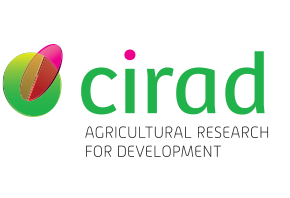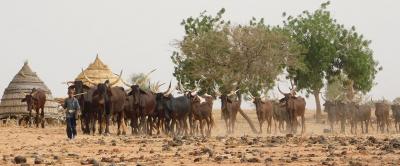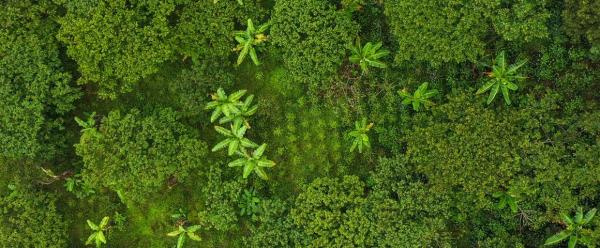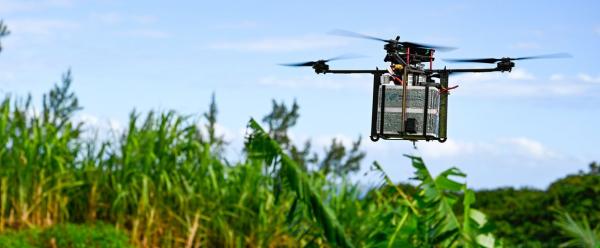Results & impact 10 October 2025
- Home
- Press area
- Press releases
- Huanglongbing in three ultraperipheral regions of the European Union
History of the emergence of Huanglongbing disease in three ultraperipheral regions of the European Union
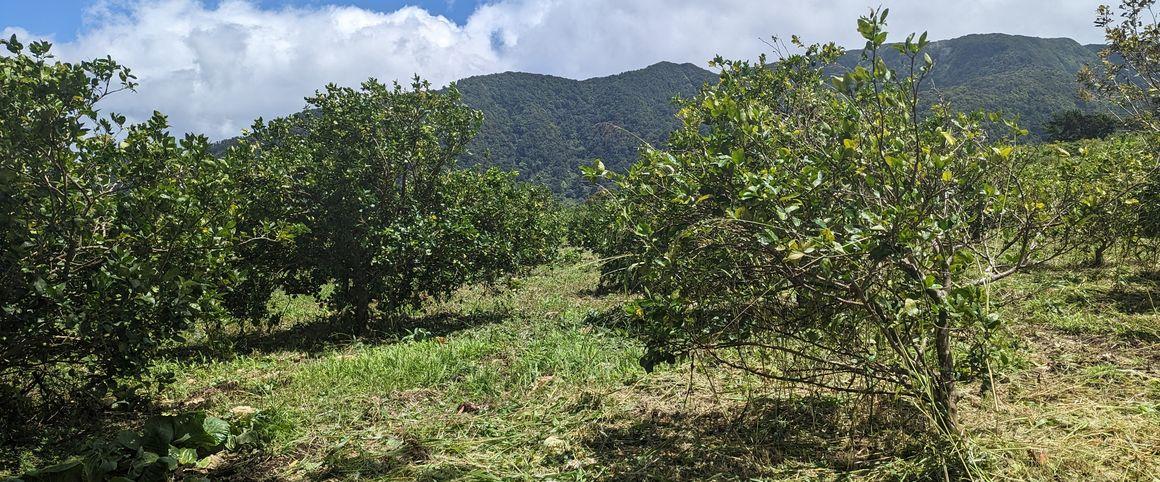
Citrus plantations affected by HLB in Guadeloupe © B. Hufnagel Maciel, CIRAD
Citrus, the world’s number one fruit crop, has been threatened by Huanglongbing (HLB) since the mid-2000s. More than 80% of citrus orchards have already disappeared in Florida, for example, and Brazil's citrus production is shifting away from São Paulo state, which is grappling with an unchecked epidemic. The disease is caused by three species of bacteria of the genus Candidatus Liberibacter, transmitted by two species of psyllid insects. Although absent from the Mediterranean basin, HLB is currently present in most of the major citrus-producing countries, including three of the French overseas departments, which are ultraperipheral regions of the European Union (EU): Guadeloupe (since 2012), Martinique (since 2013) and Réunion (since 2015). “This situation is disastrous for local citrus production, showing that no territory is immune to the spread of the disease and that it is essential to understand its modes of transmission at the global scale”, says Virginie Ravigné, a phytopathologist at CIRAD.
The study thus sought to trace the genetic relationships between the bacteria found in citrus samples based on their DNA. It was characterised by the very large number of samples analysed, which were collected from farmers’ fields and backyards as part of official monitoring processes and research programmes. To achieve this, the scientists developed and combined several types of genetic markers.
The study confirms that these epidemics are mainly caused by Ca. Liberibacter asiaticus (CLas), the most problematic species worldwide, since Ca. Liberibacter africanus (CLaf) was only found at a single site in Réunion. It also reveals extremely different situations between the French West Indies and Réunion, in spite of almost simultaneous epidemics. “The CLas strains in Guadeloupe and Martinique have very low diversity and very high genetic relatedness, suggesting inter-island movements of strains and/or independent introductions of closely related strains”.
In contrast, the genetic diversity of the CLas samples from Réunion is higher and not linked to geography. No strong structure was found associated with the presence of highly differentiated populations, which refutes the establishment of distinct populations resulting from multiple independent introductions of the pathogen. The genetic diversity of the bacterial populations revealed is not compatible with the hypothesis of a recent introduction and seems to correspond to the re-emergence of a past epidemic. “It should be noted that, unlike the West Indies, Réunion suffered a first epidemic in 1968. The incidence of the disease was significantly reduced at that time through an intensive chemical and biological control campaign (against the insect vectors), combined with mass grubbing carried out in the 1970s and 1980s”, says Olivier Pruvost, a phytopathologist at CIRAD in Réunion and coordinator of the study. By the mid-1990s, less than 0.5% of trees still showed symptoms, according to a publication at the time. “Based on our genetic analyses, it is possible that the epidemic resurgence observed since 2015 may have originated in this first epidemic”.
Frédéric Labbé, a phytopathologist at CIRAD in Réunion, continues: “The disease has a long asymptomatic phase, and its symptoms can easily be mistaken for deficiencies. The bacteria may thus have circulated unnoticed for many years”. According to the researchers, the island's contrasting landscapes and sparse citrus plantations undoubtedly acted as a barrier to the spread of the disease for a time. However, “the frequent cases of HLB found on backyard citrus trees, which were not part of the control campaign, suggest that these could constitute a disease reservoir by relaying psyllid spread and thus contributing to disease progression”.
For Virginie Ravigné, “the challenge today for these three overseas territories is deciding whether and where to replant”. CIRAD is assisting this process with the agricultural support services, knowing that, for now, most citrus crops are susceptible to HLB. In the longer term, CIRAD is working to develop new citrus varieties that would retain their taste characteristics while incorporating resistance or tolerance genes. Research programmes are currently analysing the genetic determinants of tolerance (mainly observed in certain lime varieties) and of strict resistance (found in citrus fruits from Oceania, such as finger limes). The goal is to cross these with sensitive commercial varieties and to test these new hybrids.
CIRAD is also developing research on the use of new tetraploid rootstocks, innovative agronomic practices using chemical ecology for example, improved molecular diagnostics, and better early detection of the bacteria at the landscape level using drone imagery. However, the integration of these techniques into strategic plans will not be possible for several years. For territories that are still free of the disease, the focus is therefore on vigilance to delay the arrival of the disease as much as possible, as well as on anticipation. These topics are supported by a working group on HLB, jointly led by CIRAD and ANSES, within the Plateforme d’Epidémiosurveillance en Santé Végétale (Plant health epidemiological surveillance platform - ESV).
Reference
Pruvost Olivier, Boyer Karine, Labbé Frédéric, Weishaar Marine, Vynisale Anaïs, Melot Claire, Hoareau Cécile, Cellier Gilles, Ravigné Virginie. 2024. Genetic signatures of contrasted outbreak histories of "Candidatus Liberibacter asiaticus", the bacterium that causes citrus huanglongbing, in three outermost regions of the European Union. Evolutionary Applications, 17 (12): 1-16. https://doi.org/10.1111/eva.70053
This research was funded by the Regional Council of Réunion, the European Observation Network for Territorial Development and Cohesion, the Health and Biodiversity project, the French National Research Agency, the Department of Réunion and the European Union.

